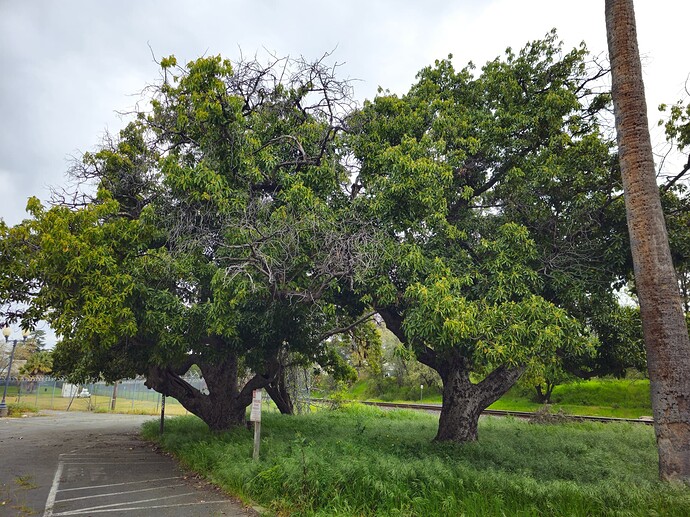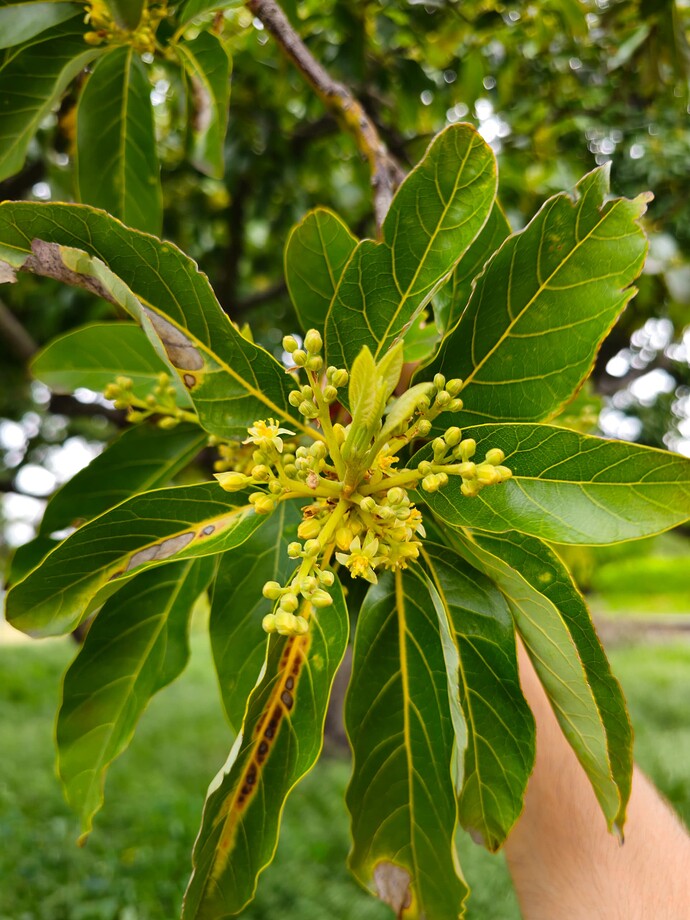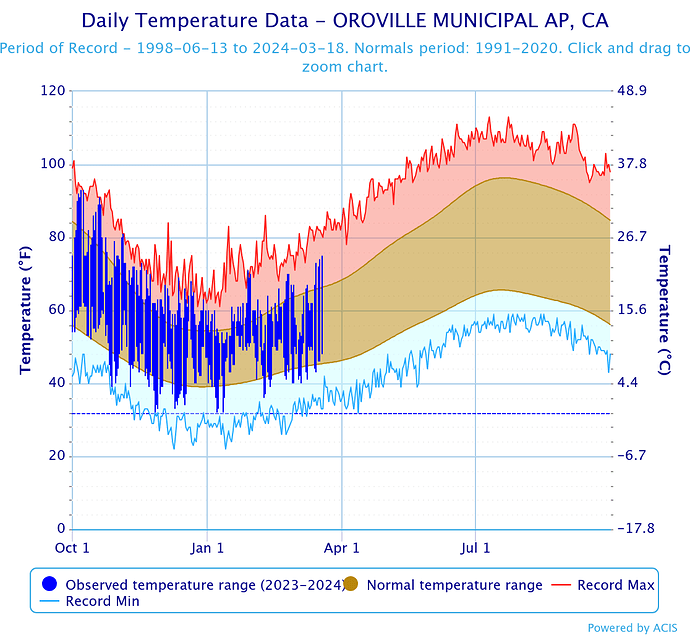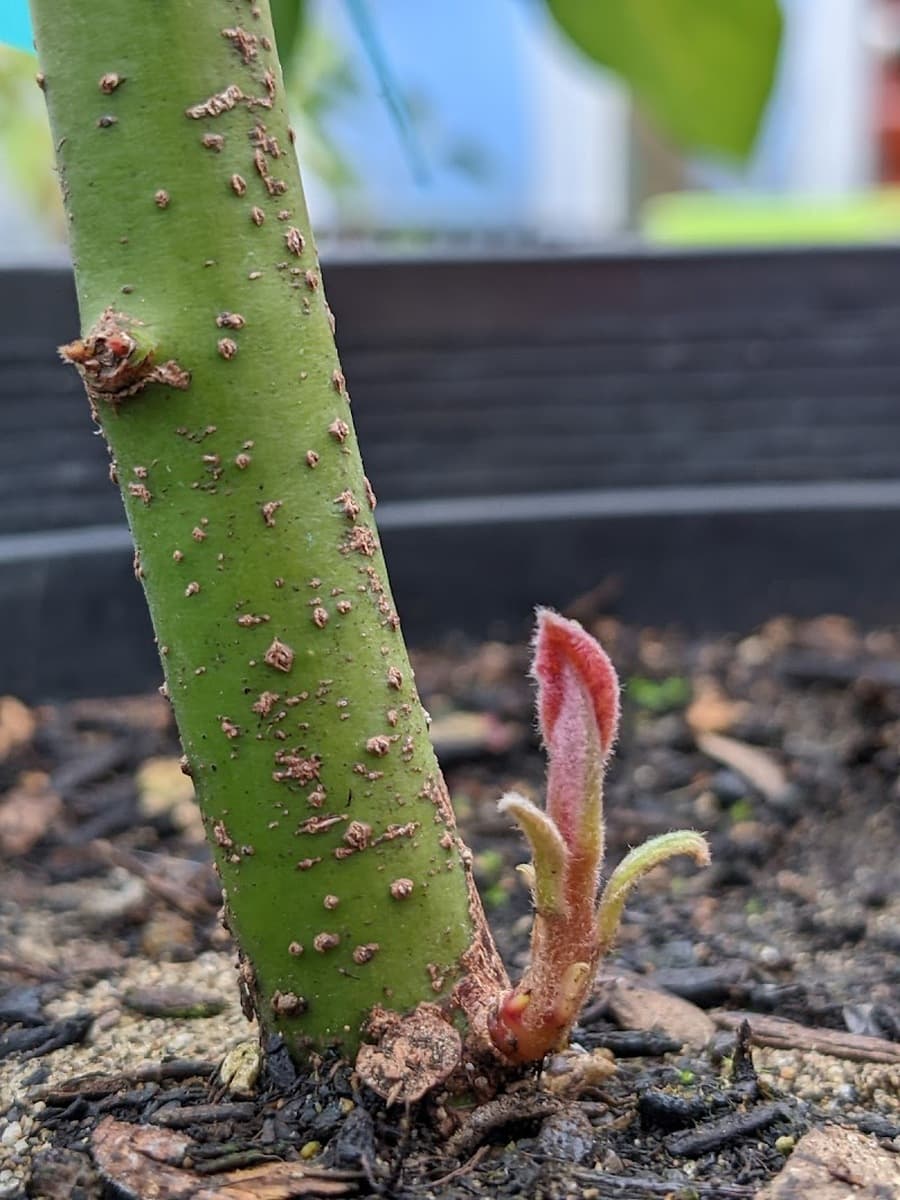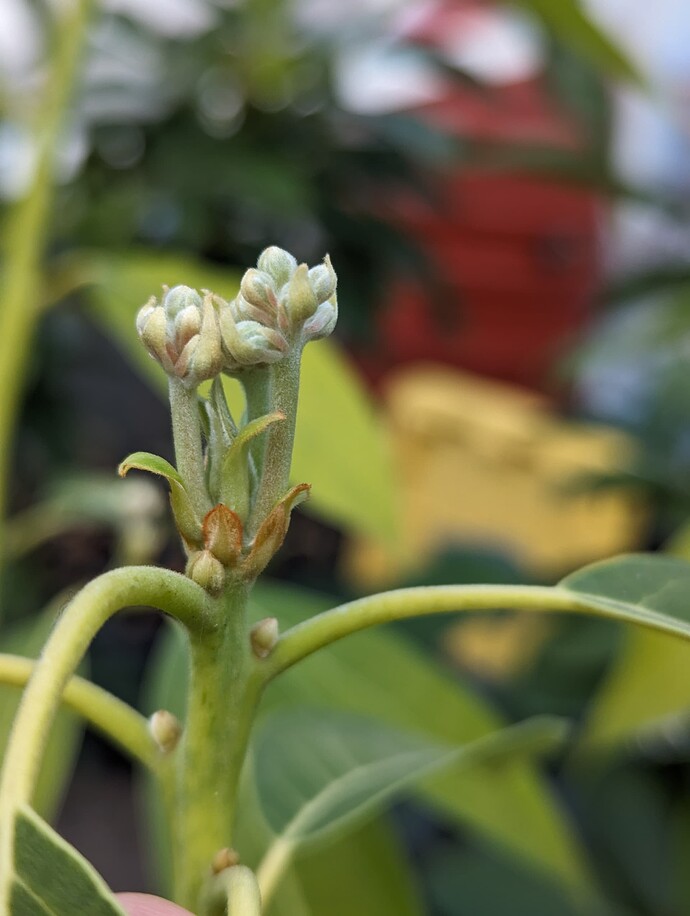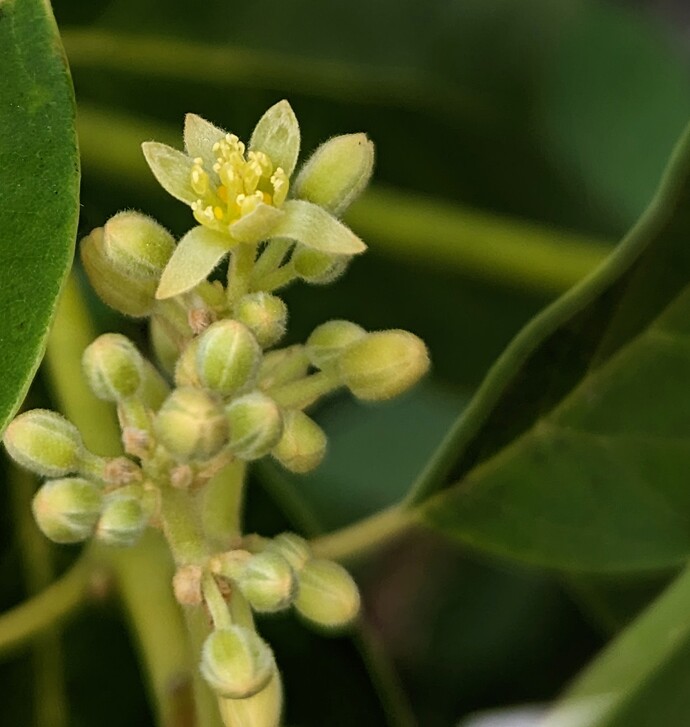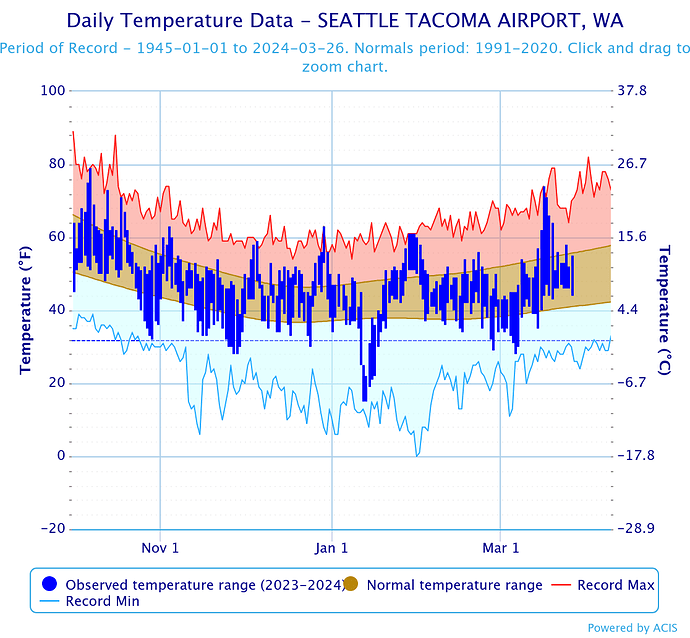I’ll have to continue to pay close attention to mine but I think no blooms this year. Last year it bloomed in early January, this winter was much warmer too. Do they sometimes skip years producing? If so what are the main factors
I believe it’s a complicated issue. For varieties that hold their fruit for 12+ months (Guatemalan types and hybrids thereof), they will often flower less and set less new fruit if they are holding a large crop from the prior year. I.e., they can fall into patterns of alternate bearing.
For Mexican types, that’s less of a factor since the last year’s fruit usually has fallen by the time the flowers emerge. However, there are still other reasons a tree might fail to set flower buds in the fall, as explained in this great resource from the Western Australia ag ministry (it references Hass in the title, but much of the summarized research is generally applicable to avocados). Here are some excerpts:
Producing sufficient flowers
All the research into flowering and pollination accepts the basic belief that avocado trees are prolific flowerers, but are they always? A wander through most avocado orchards during flowering, particularly ones displaying alternate bearing problems, will display a great array of flowering intensity – from massive flowering to virtually none on different trees and in some cases different major limbs within a single tree.
The first aspect is to consider what triggers flower initiation. The general consensus is that a period of low temperature (below 20°C) and short day length (less than 10 hours) is required to initiate the transition from vegetative bud to floral bud (Buttrose and Alexander 1978, Nevin and Lovatt 1990, Salazar-Garcia et al. 2006).
The term ‘irreversible commitment to flowering’ is used to describe the time when the apical bud becomes committed to reproductive growth. Generally, this is achieved after the accumulation of about 28 days of conditions suitable for flower initiation (Salazar-Garcia and Lovatt 2002, Salazar-Garcia et al. 2006).
…
Avocado flowers are borne on new season growth, that is, shoots produced during the previous season’s vegetative flush. Therefore, growth of shoots is required to produce buds that can develop into flowers. In the South-West of Western Australia, three vegetative flushes are normally observed – a spring flush, summer flush and autumn flush, similar to New Zealand (Dixon et al. 2008).
Flowers can develop on any of the flushes, but the spring flush reportedly provides the greatest contribution in Mexico (Salazar-Garcia et al. 2006) and New Zealand (Cutting 2003). These were both in minimally irrigated orchards that resulted in a strong spring flush — that is, a greater number of shoots produced per branch, compared to later flushes.
I was curious if they had a bad freeze this January, like many other places did, but it looks like it was pretty mild all winter. The airport may be a few degrees warmer from looking at their relative locations on the map, but it only barely hit freezing there a couple times this winter, so I doubt those trees even got a hard freeze:
Yeah, its been very mild for me in California. In fact, at my place up by Gasquet CA we have yet to even get below 32°F so far. So far it’s looking like my sacrificial mexicola tree may survive unscathed.
Swincher, here’s some good info from Ken Stockton who has been doing some avocado variety test for NW Tuston.
I gave him some of my Hamada cuttings. You can compare where the Hamada and Bacon are doing on his multi-grafted tree.
[Southern California Backyard Avocado Growers |
Thank you for sharing. I don’t use Facebook, but I’m regularly in contact with Ken and we’ve swapped some scions a few times. I’ll make sure to ask him about Hamada next time we exchange emails.
ok, here’s his text:
For anyone interested in my multi-grafted avocado trial in NW Tucson, here’s a brief history, followed by an update: A 1-gal Wilma purchased in 2012 was planted in the yard in 2013. It grew vigorously and fruited in 2015, but after a few years I wasn’t satisfied with the fruit and in 2021 I started grafting on other varieties. In 2023 I cut it back mostly to stubs and added many more varieties. Out of a total of 44 different varieties since I started grafting, 25 range from “recently dead” to “doing great.”
My goal was to identify at least one variety of decent quality that would do well in Tucson’s climate (hot, dry summer interrupted by monsoon-style downpours, with occasional hard freezes in winter). To complicate matters, one of the scions I grafted (I have no idea which, or from what source) was infected with ASBVd (Avocado Sunblotch Viroid disease) and now the whole tree has it, so as I try to draw conclusions about quality and performance from my observations I can’t be sure what’s due to the variety, and what may be a result of the disease. I’m assuming the disease is probably never beneficial, so if a variety does well it would probably do better without the disease–but if it does poorly, I can’t be certain the variety is to blame.
The tree experienced two nights this past winter with lows just below, and just above, 24 degrees Fahrenheit. I wasn’t ready to leave some of the grafts totally unprotected, so I added a heat lamp about 30 inches above the ground, aimed at the ground, as well as a 100 watt incandescent shop light at the same height at the other side of the tree. So, depending on proximity to the heat sources, some grafts received at least some protection.
In 2023 I focused most attention on Mexican varieties due to their greater cold-hardiness, and also sought out “backyard” seedling trees that were reported to have good fruit. These either had “owner” names or were unnamed by the sender (in which case I invented a name to help me keep track of it), so several of the names listed below won’t be recognizable. I’ve identified them with an asterisk.
I added multiple grafts of several varieties, but in the results below, if more than one scion was grafted, I only list the most vigorous (although sometimes multiple grafts were included in photos). The entries include name, year grafted, length of longest stem coming from the scion, presence or absence of flower buds, and a very brief assessment of freeze damage. I started trying to organize them in categories, but mostly gave it up. In general, though, the better-performing varieties are higher on the list:
Mexicola Grande 2022 28", flower buds, no freeze damage
Aravaipa 2022 80", lots of flower buds, no freeze damage
Mexicola 2023 64", lots of flower buds, minor freeze damage
Duke 2021 multiple branches, longest 40", lots of flower buds, no freeze damage
Jade 2023 38", lots of flower buds, no freeze damage
Opal 2023 30", lots of flower buds, no freeze damage
Linh 2023 18", no flower buds, no freeze damage
Stewart 2023 12", no flower buds, no freeze damage
*Hamada 2023 7", flower buds, no freeze damage
*Sabrosa 2023 23", flower buds, no freeze damage
*Elmo 2023 12", no flower buds, minor freeze damage
Puebla 2023 40", 3 flower bud clusters, no freeze damage but in a protected spot
*Magdalena seedling 2022 60", a couple flower bud clusters, minor freeze damage & many dead tips
*Doc Joe 2023 7", buds frozen, dead tips
Fuerte 2023 32", few flower buds, minor freeze damage
Bacon 2023 51", 1 flower bud cluster, minor freeze damage (dead tips)
Royal Wright 2023 63", no flower buds, significant freeze damage (defoliated, tips dead)
*Grande Negra (aka Big Black) 2023 62", no flower buds, moderate freeze damage, dead tips
Zutano 2022 40", 1 cluster flower buds, heavy freeze damage
Reed 2021 mostly dead from 2 nights @ 24F
Day 2023 2", no flower buds, no freeze damage but in a protected spot over heat lamp
GEM 2023 4", flower buds, no freeze damage but in a protected spot over heat lamp
Joey 2023 6", flower buds, no freeze damage but in a protected spot
Long South Gate 2023 4", maybe flower buds starting?, no freeze damage but in a protected spot
We have first flowers on a seedling! Seedling #169, which is the rootstock of the Jade tree from Gainesville. You can see the size this tree was in May 2021 here:
And here’s what the rootstock branch looked like in Feb 2022 when it first was allowed to grow its own branch (the sprout on the right):
Here’s what that branch looks like now (from the other side, so it is the green trunk on the left):
The chlorotic looking leaves in that photo are just getting ready to drop, after a couple years of being sucked dry repeatedly by soft scale. This is the only tree in the greenhouse that seems to be a scale magnet, but recently I’ve been releasing all the slugs and snails I find into the canopy of this tree, and they’ve basically eliminated the scale.
And finally (drumroll) one branch has two small flower panicles!
Oliver told me that the rootstock was from the summer 2020 crop, so that means it is flowering in under four years from seed. Very precocious for an avocado! He wasn’t sure of the seed parent, since he was just sprouting seeds from all their trees together for rootstocks, but he said statistically it was probably from either the Del Rio or May cultivars.
Brissago is starting to expand its flower panicles, might be a week or two (or three?) from first open flowers. I wonder how this compares to the ortet in Switzerland. Have you visited it recently @maesy or @Marsjaner? I expect that my greenhouse is a bit warmer than there, but maybe not that much.
I haven’t been down there lately, but if I should I surely would take some pictures and let you know.
First open flowers on “Jade” today! Well one of them is in ![]() phase so might have opened yesterday afternoon, but the rest are
phase so might have opened yesterday afternoon, but the rest are ![]() and seem to be in the full range from just opening to almost closing for the day.
and seem to be in the full range from just opening to almost closing for the day.
Female phase:
Shedding pollen (best pollen volume of any variety yet flowering this year):
The only other ones with open flowers are Walter Hole and Joey at this point. Lots of others still to come.
You will have to link a YouTube video when you eat your first seattle avocados. The flowers are so exciting.
With this being the third year of flowers, I really do hope they are large enough trees now to finally set and ripen some fruit.
But if not, I think I’ll have to consider what factors might be to blame. Cool temperatures? Insufficient pollination due to minimal insect activity, and my inexperience with hand pollination? Nutrient or watering issues?
As far as YouTube, that’s not my thing, but I could probably find someone with a local fruit focused channel to come by for a visit at the appropriate time if any fruit does ripen this season.
No, unfortunately I didn’t have the opportunity to visit the Ticino. At the moment it’s not comfortable there for vacations ![]() . Lots of rain and relatively cold. Difficult to estimate how the avocados are doing. But the last few months, the temperature were a lot above average there:
. Lots of rain and relatively cold. Difficult to estimate how the avocados are doing. But the last few months, the temperature were a lot above average there:
I will go to Ticino in autumn. But not sure, if I can visit. I first have to ask the owner of the Avo’s if I am allowed. And unfortunately I won’t be able to take any photos either.
I was referring to the tree growing on the senior center grounds in Brissago, not the trees in the lakeside orchard. But I’d love to hear any updates on those, too!
And thank you for sharing the temperature chart. Seattle also had a mild winter other than the one very severe freeze in January:
I have a young potted topa topa tree in my living room that now after hand pollinating the flowers is holding a dozen of tiny fruits. I want to bring it outside. Is there a danger that the tree is dropping the fruits at low night temperatures around 40f?
That’s a good question and I’m not sure. I do think it is risky because I often see shock moving them from indoors to outdoors in spring. It’s one reason I just leave them all outdoors now other than bringing them in the greenhouse for bad freezes.
I think you are going to see it abort many of those either way, it’s very common for avocados to drop a significant percentage around pea/peanut size. But it could be detrimental to put it outside this early in the fruit development.
I am in Portland area , we have been upgraded to 9A and I am ready to try. What are you finding to be the best? Where’d you get the dukes?
Welcome to the forum, @dabouv1! I got my seeds and scionwood of Duke from Marta Matvienko, but I don’t know when she’ll offer those again because she said she lost access to the property where she had a large Duke tree before.
The avocado project does have a few members down around Portland even though it’s a bit beyond the official area. You’d need to be willing to come pick up trees in Seattle next spring and be willing to post updates about them on our website, and understand that Portland often gets worse freezes so it’s even a bit more of a long shot than Seattle, but with those caveats you’re welcome to sign up. I posted a link here about a month ago to the sign-up form:
You may not get the confirmation email right away, I’ve had trouble with spammers and bots trying to use the form, so my web host keeps limiting the mail server. But I’ll manually send it again within a day or two.
